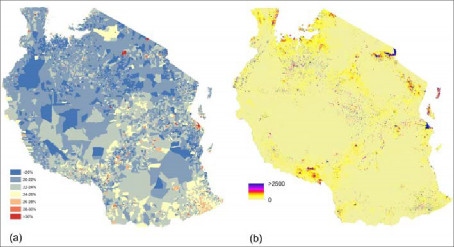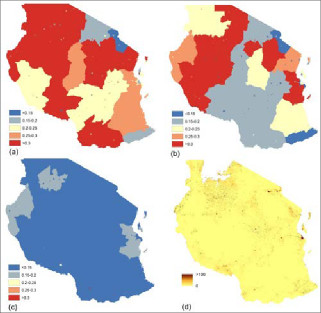WorldPop Projects
Mapping births and pregnancies at high resolution
Project leads: Andy Tatem, Cori Ruktanonchai
Collaborators/funders: NORAD, Wellcome Trust
The health and survival of women and their newborn babies in low income countries has been a key priority in public health since the 1990s. However, basic planning data, such as numbers of pregnancies and births, remain difficult to obtain. For maternal and newborn health and survival, planning for safer births and healthier newborns could be improved by more accurate estimations of the distributions of women of childbearing age (WoCBA). We use demographic mapping methods based on freely available data for the production of high resolution datasets depicting estimates of numbers of people, women of childbearing age, live births and pregnancies, projected through the year 2035. We constructed satellite derived maps of settlements and land cover, and use these to redistribute areal census counts to produce detailed maps of the distributions of women of childbearing age. We then integrate household survey data, UN statistics and other sources on growth rates, age specific fertility rates, live births, stillbirths and abortions to convert the population distribution datasets to gridded estimates of births and pregnancies. We project these estimates through the year 2035 using UN specified urban and rural-specific growth rates for each year. These estimates, which can be produced for current, past or future years based on standard demographic projections, can provide the basis for strategic intelligence, planning services, and provide denominators for subnational indicators to track progress. Further, these estimates can be used to inform epidemiologically relevant outbreaks, including the most recent Zika virus outbreak in the Americas.


Publications
- Mapping adolescent first births within three east African countries using data from Demographic and Health Surveys: exploring geospatial methods to inform policy
- Model-based projections of Zika virus infections in childbearing women in the Americas
- Equality in Maternal and Newborn Health: Modelling Geographic Disparities in Utilisation of Care in Five East African Countries
- Mapping for maternal and newborn health: the distributions of women of childbearing age, pregnancies and births


